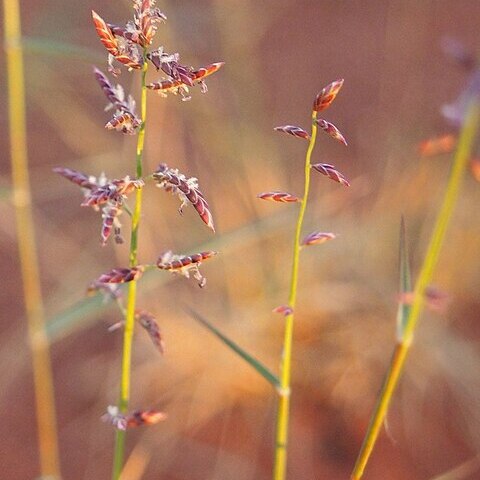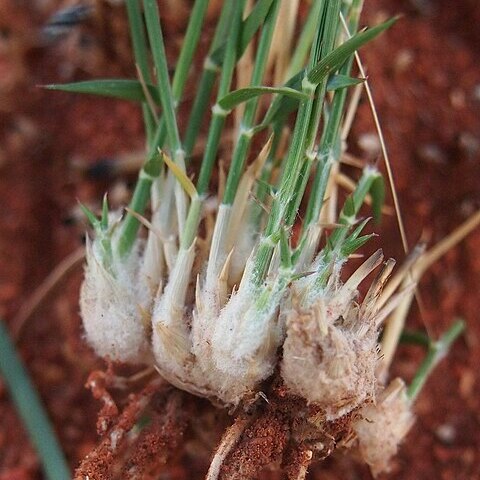Perennials, forming tussocks 15–22 cm wide, often thickened and woolly at base, often rhizomatous. Culms erect, 22–60 cm high, wiry; lower internodes sometimes woolly. Leaves mostly glabrous or lower ones hairy or woolly; sheath much shorter than internodes except in arid forms; ligule a fringe of hairs, 0.6–0.7 mm long; blade tightly rolled, stiff, often setaceous and c. 1 cm long, pungent. Inflorescence a raceme or a spiciform or contracted panicle, interrupted, 9–20 cm long, 1–7.5 cm wide, usually scabrous. Spikelets pedicellate or almost sessile, linear to oblong, compressed, often curved, 5–30 mm long, 1.5–3.5 mm wide; rachilla weakly flexuose or straight, thick; florets 8–62, closely overlapping or rachilla partly exposed. Glumes (sometimes tardily) deciduous, ±equal, ovate, 1.1–2.5 mm long, sometimes granular. Lemma ovate (sometimes abruptly widened near base), 2–3 mm long, obtuse, often granular or scabrous-papillose, with thick lateral nerves; lower lemmas often falling before rachilla. Palea: body obovate, pouched, often granular, ciliolate at apex; keels scaberulous; flaps narrower than body. Stamens (2–) 3; anthers 0.8–1.3 mm long. Grain dorsally compressed, oblong or ovoid, 0.6–1 mm long, ±flat or slightly concave on back, obtuse or truncate at base and apex, with stipe c. 0.2 mm long.
More
A grass which keeps growing from year to year. It forms tussocks. These clumps spread out the the centre dies. It grows 60 cm high. It has coarse hairy roots. It has a dense woolly base. The stems are erect and wiry. The underground rhizomes have many branches. The leaves are 3-8 cm long by 0.2 cm wide. The leaves are narrow and rolled in at the edges. The tip is rigid. The seed head is 20 cm long by 7 cm wide. It tapers to a point. There are several spikelets. These are about 0.6-2.2 cm long. They are long and not woolly.
Commonly onsand plains, watercourse levees, dunes and swales; in deep red sands and sandyloams or shallow often stony or gravelly sands or loams on sandstone, limestoneand quartzite hills and ridges; also on lateritic soils and heavy-textured redearths and clay loams.
More
It grows on spinifex sandplains. It can also be on river flood plains. It grows in arid and semiarid places. Clumps re-grow after fires. It grows in the tropics and subtropics. It can grow in arid places.


